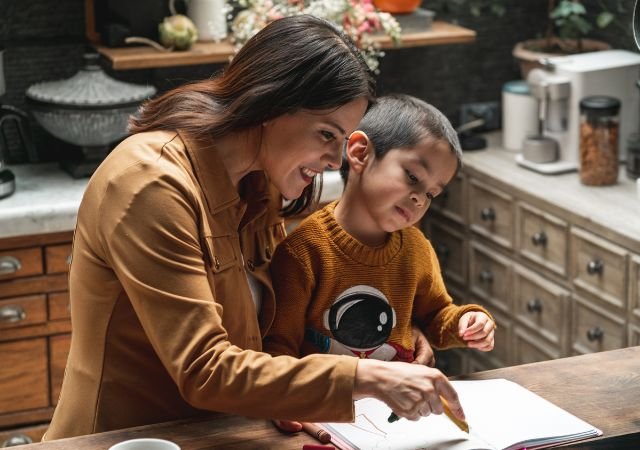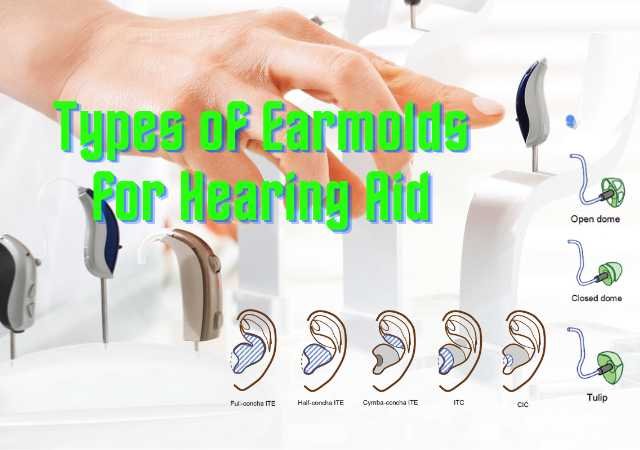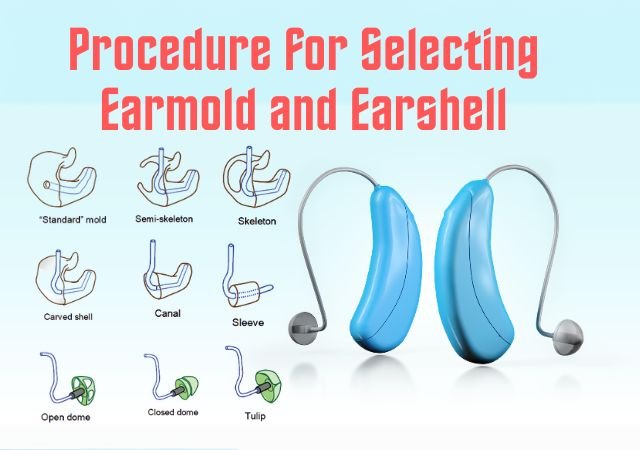
Phonetic Placement Therapy – Techniques | Cues | Chart: Phonetic Placement Therapy is a speech therapy technique used to correct speech sound errors by focusing on the precise placement of articulatory structures such as the lips, tongue, and vocal cords. It’s often used to help individuals, especially children, who have difficulty producing specific speech sounds accurately.
A speech-language pathologist may use tactile and visual clues during phonetic placement therapy to assist the patient feel and comprehend where their articulators should be positioned. To make sure the person is appropriately forming the speech sound, this may entail the use of mirrors, diagrams, and hands-on assistance.
Phonetic Placement Techniques
Phonetic Placement Therapy is a systematic approach that can be tailored to an individual’s specific needs and speech sound errors. It requires patience, practice, and consistent effort to achieve the desired results. A licensed speech-language pathologist or therapist typically administers this therapy to ensure it is conducted effectively.
Phonetic Placement Technique for Production of Speech Sounds
In Phonetic Placement Therapy, “Instructions for Production” refers to specific guidelines and techniques used to improve speech clarity, articulation, and overall vocal quality. These instructions are essential for individuals seeking to enhance their communication skills and pronunciation. Here’s how “Instructions for Production” are typically given in Phonetic Placement Therapy:
Phonetic placement technique for the production of a speech sound is a method of instruction.
- To make the sound /f/, instruct the client to place his or her upper teeth on their lower lips and blow air over them; to make the sound /∫/, instruct them to pull their tongues back from their upper teeth past the rough part of the palate, make a groove in the tongue, round their lips, and blow air.
- Add tactile and visual cues to verbal descriptions (for example, demonstrate the right sound and instruct the client verbally while they attempt it: “Remember to lightly touch your lower lip as you blow air for the /f/; remember the groove as you blow air for the /∫/”).
- Depending on the client’s stage of development, analyzing and describing the differences between the mistake production and the target production may be beneficial. Sometimes, as part of the education, physicians like to utilize images or drawings that depict where the articulators should be placed.
Phonetic Placement Technique for Correction of Speech Sounds
In Phonetic Placement Therapy, “Instructions for Correction” play a crucial role in helping individuals improve their speech and correct any pronunciation or articulation issues. These instructions are tailored to address specific speech challenges.
A Manual of Exercises for the Correction of Speech Disorders by Scripture and Jackson (1927), which featured phonetic placement strategies for speech instruction, was released more than 85 years ago. These writers advised:
- Mirror work and drawings that depict where the articulators should be placed to produce particular sounds
- “Mouth gymnastics,” or movements of the articulators (lips and tongue) in response to verbal cues and models (keep in mind that we’ll talk about why these might not be the best idea later)
- The use of straws to help direct the airstream and tongue blades to teach where to place sounds.
In the phonetic placement approach, idealized phoneme productions are explained and described. The client is given verbal explanations that detail motor gestures or movements as well as the proper sites of articulatory contact (mouth, jaw, lip, and velum) involved in creating the target segments. This method of teaching sounds is widely employed either alone or in conjunction with imitation, successive approximation, and context use.
Phonetic Placement Technique for Correction of an Interdental Lisp
Phonetic Placement Technique for Correction of a Lateral Lisp
Phonetic Placement Technique for Correction of a Lateral Lisp: Step-by-Step Instructions
Step 1: Straw Resonance Exercise
- Position a straw so that it protrudes from the side of the client’s mouth.
- When producing a lateral [s], ensure the airstream resonates on the side of the mouth where it is directed.
- Insert the straw into the front of the mouth, and when correctly producing /s/, the straw should resonate in the front of the mouth.
Step 2: Central Emission Awareness
- Direct attention to a central emission by using a feather, strip of paper, or finger placed in front of the center of the client’s mouth.
- Instruct the client to tap their incisor gently while producing [s].
- Note a break in the continuity of the outflow of breath if emitted centrally, and no break if emitted laterally.
- Develop awareness by instructing the client to inhale air and focus on the cool sensation, then exhale through the same central aperture.
Step 3: Tongue Blade Grooving
- Instruct the client to place a tongue blade down the midline of the tongue to establish a groove for the airstream.
Step 4: Lip Retraction and Tongue Forward Movement
- Instruct the client to retract the lips sharply and push the tongue forward.
- Practice saying /s/ in this position, emphasizing correct tongue placement.
Step 5: Extended /ts/ Release Exercise
- Instruct the client to make /t/, holding the release position for a relatively long time.
- Retract the lips and drop the jaw slightly after the release, producing a [ts] sound.
- Ensure that grooving is maintained during this process.
- Gradually decrease the release phase of /t/ until /s/ is approximated.
- Practice extending the duration of [ts], and consider using words ending with /ts/, such as /kæts/ or /lɛts/, for reinforcement.
Note: Progress through these steps at a pace comfortable for the client, ensuring they master each step before advancing to the next. Regular practice and reinforcement will contribute to the correction of the lateral lisp.
Phonetic Placement Technique for Production of /ɝ/
Phonetic Placement Technique for Production of /ɝ/: Step-by-Step Instructions
Step 1: Growling and Animal Sounds
- Instruct the client to imitate sounds such as a tiger’s growl (grrr), a rooster’s crow (r-rr-rr), or a race car’s engine (rrr).
Step 2: Lower Jaw and Tongue Movement
- Guide the client to lower their jaw and articulate /l/.
- Instruct them to push the tongue back until the distinctive /ɝ/ sound is achieved.
- Alternatively, transition from [n] to [nɚ] or [d] to [dɚ].
Step 3: Tongue Blade Technique
- Direct the client to produce /l/.
- Using a tongue blade, gently push the tip of the tongue backward until a depressor can be inserted between the tongue tip and the teeth ridge, resulting in the production of /ɝ/.
Step 4: Trilled Tongue and /ɝ/
- Instruct the client to imitate a trilled tongue sound, then transition to the /ɝ/ sound with the tongue tip on the alveolar ridge.
- Have the client stop the trill but continue producing /ɝ/.
Step 5: Tongue Arching with /a/
- Guide the client to produce /a/ (as in “father”).
- Instruct them to raise the tongue tip and blade, arching the tongue toward the palate without touching it.
Step 6: /i/ Transition to /ɝ/
- Instruct the client to produce /i/.
- Guide them to lift and retract the tongue tip to produce /ɝ/.
Step 7: /θ/ to /ɝ/
- Instruct the client to place the tongue lightly between the incisors as in /θ/.
- Quickly retract the tongue tip into /ɝ/, keeping it near the alveolar ridge to prevent intrusion of a vowel sound.
Step 8: /z/ Jaw Drop and /ɝ/
- Instruct the client to say /z/.
- While continuing to say /z/, guide them to drop the jaw and produce /ɝ/.
Step 9: /d/ Tongue Positioning
- Guide the client to position the tongue for /d/.
- Retract it slightly while dropping the tongue tip, resulting in the production of /ɝ/.
- Other clusters like /tr/, /θr/, and /gr/ may also be used.
Step 10: Mouth Spreading Technique
- Have the child spread the sides of their mouth with fingers.
- Instruct them to produce a prolonged /n/ and then curl the tongue backward, maintaining the sound.
Step 11: Contrast Pairs Exercise
- Contrast pairs of words beginning with /w/ and /r/.
Use word pairs like wipe—ripe, woo—rue, wing—ring, way—ray, wake—rake, wag—rag, wail—rail, woe—roe, weep—reap, wed—red.
Note: Ensure to provide positive reinforcement, encouragement, and corrective feedback throughout the practice sessions.
Phonetic Placement Technique for Production of /l/
Phonetic Placement Technique for Production of /l/: Step-by-Step Instructions
Step 1: Mirror Exercise
- Begin by standing in front of a mirror.
- Instruct the client to open their mouth widely.
- Ask the client to produce the /l/ sound while observing their tongue placement in the mirror.
Step 2: Tongue Movement Practice
- Guide the client to position their tongue for /l/.
- Instruct them to lower the tongue to produce the vowel sounds.
- Begin with the combination [la], [la], [la].
- Variate the exercise using /i/ and /u/ instead of /a/.
Step 3: Imitation Exercise
- Have the client imitate your singing of nonsense syllables:
- Example: [lei], [li], [lai].
- Encourage accurate imitation of the /l/ sound in different phonetic contexts.
Step 4: Tactile Feedback
- Utilize a lollipop, peanut butter, or a tongue blade.
- Touch the alveolar ridge, where the tongue tip makes contact for a correct /l/.
- Instruct the client to place their tongue at that point and say /l/.
Step 5: Bird’s Beak Imagery
- Encourage the client to visualize their tongue as one part of a bird’s beak.
- Describe the roof of the mouth as the other part of the beak.
- Instruct the client to position the tongue directly behind the teeth.
- Guide them to move the tongue up and down quickly, mimicking a bird’s beak chirping, while saying /a/.
Note: Ensure that the client practices these exercises regularly for effective improvement in the production of the /l/ sound.
Phonetic Placement Technique for Production of /f/ and /v/
Phonetic Placement Technique for Production of /f/ and /v/: Step-by-Step Instructions
Step 1: /f/ and /v/ Pronunciation Technique
- Direct the client to touch their upper front teeth to their lower lip while exhaling.
- Use a feather or paper strip to guide the airflow while producing the sounds /f/ or /v/.
Step 2: /f/ and /v/ Articulation Practice
- Have the client vocalize the sound [a].
- Instruct them to position their lower lip beneath the upper teeth and create audible friction by exhaling between the lip and teeth for proper articulation of /f/ and /v/.
Phonetic Placement Technique for Production of /k/ and /g/
Phonetic Placement Technique for Production of /k/ and /g/: Step-by-Step Instructions
Step 1: Pressure Release Exercise
- Begin by pressing underneath the posterior portion of the child’s chin.
- Instruct the child to say [kʌ] in a whisper as the pressure is suddenly released.
Step 2: Tongue Tip Placement
- Hold the tongue tip behind the lower teeth, using a tongue blade if necessary.
- Instruct the client to hump the back of the tongue, building up oral pressure.
- Release the tongue contact quickly, allowing the built-up pressure behind the constriction to be released.
Step 3: Gun-Shooting Imitation
- Ask the client to imitate the clinician as the clinician pretends to shoot a gun.
- Emphasize the production of a lingua-fricative, as in [ka].
Step 4: Rocking Movement Exercise
- Instruct the client to alternate the raising of the back and front of the tongue.
- Demonstrate a rocking movement from [k] to [t], emphasizing the transition between the two sounds.
Note: Ensure that these exercises are conducted in a supportive and encouraging environment. Provide feedback and reinforcement as needed, and be patient throughout the process. Regular practice and repetition will help the client develop proper placement for the production of /k/ and /g/.
Phonetic Placement Technique for Production of /t/ and /d/
Phonetic Placement Technique for Production of /t/ and /d/: Step-by-Step Instructions
Step 1: Initial Instructions
- Ask the client to stand in front of a mirror.
- Instruct the client to press the tip of their tongue firmly against the upper dental ridge.
Step 2: Producing /t/ or /d/ Sounds
- While maintaining the tongue tip against the upper dental ridge, have the client quickly lower the tongue.
- Explain that this action will release air pressure, resulting in approximations of the /t/ or /d/ sounds.
Step 3: Tactual Sensation for /t/ Sound
- Instruct the client to produce a /p/ sound.
- Ask the client to place the tongue tip between the lips and attempt to say /p/.
- Clarify that this provides a tactual sensation of a stop made with the tongue tip but is not the correct position for /t/ or /d/.
Step 4: Correct Tongue Placement
- Guide the client to produce a similar sound with the tongue tip in contact with the upper lip only.
- Repeat the exercise with the tongue tip touching the alveolar ridge.
Note:
- Encourage the client to practice these exercises regularly in front of a mirror.
- Provide positive reinforcement and feedback to reinforce correct tongue placement.
- Remind the client to focus on the correct tongue position to improve the accuracy of /t/ and /d/ sounds.
- If necessary, offer additional practice exercises to further develop proper phonetic placement.
Phonetic Placement Cues
Speech Sound | Visual Cues |
/p/ | Extend and separate your fingers as if you’re releasing them while articulating the sound /p/. Mimic the burst of air required to create the /p/ sound. |
/b/ | Begin by placing the ASL sign for “b” near your face and then move it away from you while pronouncing the /b/ sound. |
/m/ | Position your index finger beneath your nose and above your lips while pronouncing the sound /m/. This highlights the necessity of airflow from the nose to produce the /m/ sound. Alternatively, you can gesture towards your mouth to underscore the action of pressing your lips together when saying /m/. |
/n/ | Touch the side of your nose while pronouncing the sound /n/. This underscores the importance of the airflow from the nose required to produce the /n/ sound. |
/t/ | Perform a facepalm directed at yourself while simultaneously flicking your index finger upward as you articulate the sound /t/. This gesture imitates the tongue making contact with the top of the mouth. |
/d/ | Begin by curling the index finger, then tilt the hand so that the index finger is pointing downward. |
/h/ | Position your hand in front of your mouth and then gently withdraw it, highlighting the ongoing airflow required to produce the /h/ sound. |
/k/ | Place your open hand on your throat and pull away while pronouncing the /k/ sound. This highlights that the /k/ sound is located at the back of the mouth, near the throat. |
/g/ | Extend your index finger towards your throat and retract it while pronouncing the sound /g/. This gesture highlights that the /g/ sound originates at the back of the mouth, near the throat. |
/f/ | Begin by bringing your fingertips together, pointing towards your mouth. Then, gradually separate your fingers while articulating the /f/ sound. This highlights the importance of maintaining a continuous airflow for producing the /f/ sound. |
/v/ | Begin by positioning the index and middle fingers pointing towards the mouth. Subsequently, unfurl the fingers and widen the gap while enunciating the /v/ sound. This highlights the importance of sustained airflow required to articulate the /v/ sound. |
/s/ | Begin with the finger positioned next to the mouth, then extend the finger away from the body and move it in a sideways “s” motion, highlighting the ongoing airflow required to produce the /s/ sound. |
/z/ | Initiate by placing the index finger close to the mouth, then proceed to move it away in a zigzag pattern resembling the letter “z.” This highlights the ongoing airflow required to produce the /s/ sound. |
/sh/ | Position your index finger in front of your mouth, mimicking the gesture of hushing someone, while pronouncing the “sh” sound. This gesture is commonly associated with the recognizable symbol for the “sh” sound. |
/w/ | Use your index finger to form a circle around your mouth while pronouncing the sound /w/. This highlights the lip rounding required to articulate the /w/ sound. |
/y/ | Create a V shape with your hand and gently push it forward while pronouncing the “y” sound. |
Phonetic Placement Chart
Place of Articulation | Phonetic Symbol and example word | Manner of Articulation | Voicing [ Voiced (+) and Voiceless (-)] |
| Bilabial | /p/ (pay) | Stop | – |
| /b/ (bay) | Stop | + | |
| /m/ (may) | Nasal | + | |
| Labial/velar | /ʍ/ (which) | Glide (semivowel) | – |
| /w/ (witch) | Glide (semivowel) | + | |
| Labiodental | /f/ (fan) | Fricative | – |
| /v/ (van) | Fricative | + | |
| Linguadental (interdental) | /θ/ (thin) | Fricative | – |
| /ð/ (this) | Fricative | + | |
| Linguaalveolar | /t/ (two) | Stop | – |
| /d/ (do) | Stop | + | |
| /s/ (sue) | Fricative | – | |
| /z/ (zoo) | Fricative | + | |
| /n/ (new) | Nasal | + | |
| /l/ (Lou) | Lateral | + | |
| /ɾ/ (butter) | Flap | + | |
| Linguapalatal | /ʃ/ (shoe) | Fricative | – |
| /ʒ/ (rouge) | Fricative | + | |
| /tʃ/ (chin) | Affricate | – | |
| /dʒ/ (gin) | Affricate | + | |
| /j/ (you) | Glide (semivowel) | + | |
| /r/ (rue) | Rhotic | + | |
| Linguavelar | /k/ (back) | Stop | – |
| /g/ (bag) | Stop | + | |
| /ŋ/ (bang) | Nasal | + | |
| Glottal (laryngeal) | /h/ (who) | Fricative | – |
| /ʔ/ | Stop | + (-) |
Speech Therapy Techniques Commonly Used in Phonetic Placement Therapy
Here are some techniques commonly used in Phonetic Placement Therapy:
Auditory Discrimination
Before working on specific sounds, the therapist helps the individual develop their awareness of the target sound by contrasting it with other sounds. For example, they might listen to and distinguish between the target sound and similar sounds.
Visual Cues
Visual aids can be used to help the individual understand and remember where to place their articulatory structures. This might include pictures, diagrams, or even looking in a mirror to observe tongue and lip placement.
Tactile Cues
Some individuals benefit from tactile feedback to understand where to place their articulators. The therapist may use their fingers or various tools to gently guide the individual’s tongue or lips into the correct position.
Isolation
In this step, the therapist isolates the target sound in various positions within words, syllables, or phrases. This helps the individual focus on the specific sound they need to work on.
Sound Production
Once the individual has a good understanding of where to place their articulators, they practice producing the target sound in words, phrases, and sentences. The therapist provides feedback and guidance during this practice.
Minimal Pairs
Minimal pairs are words that differ by only one sound, such as “bat” and “pat.” Working with minimal pairs helps the individual hear and produce the target sound accurately in contrast to a similar sound.
Drills and Repetition
Repetition is a key component of Phonetic Placement Therapy. Individuals practice the target sound repeatedly to build muscle memory and improve accuracy.
Generalization
The therapist helps the individual use the corrected sound in everyday speech by incorporating it into conversation and various contexts.
Home Practice
Practicing outside of therapy sessions is crucial for improvement. The therapist may provide exercises and assignments for the individual to practice at home.
Feedback and Reinforcement
Positive reinforcement and constructive feedback are essential for motivation and progress. The therapist encourages the individual and provides guidance for improvement.
Progress Tracking
Regular assessment and tracking of progress are essential to determine if the therapy is effective and if adjustments are needed.
Conclusion
In conclusion, Phonetic Placement Therapy stands as a comprehensive and tailored approach to address speech sound errors, with a specific focus on the precise articulatory placement of structures such as lips, tongue, and vocal cords. Through a systematic framework, this therapy offers techniques and cues designed to assist individuals, particularly children, in overcoming challenges related to accurate speech sound production. The significance of licensed speech-language pathologists or therapists in administering this method cannot be overstated, ensuring its effectiveness through patience, practice, and consistent effort.
Phonetic Placement Therapy not only provides specific techniques for the production and correction of speech sounds but also integrates auditory discrimination, visual aids, tactile cues, and various exercises to enhance overall communication skills. The incorporation of home practice, feedback, reinforcement, and progress tracking adds layers of support, emphasizing the holistic and individualized nature of this therapeutic approach. As a valuable resource in the realm of speech therapy, Phonetic Placement Therapy offers a structured pathway for individuals to achieve improved speech clarity, articulation, and communication proficiency.
FAQs about Phonetic Placement Therapy – Techniques | Cues | Chart
References:
- SPEECH CORRECTION An Introduction to Speech Pathology and Audiology 9th Edition Charles Van Riper [Book]
- Articulation and Phonological disorder Speech Sound Disorders in Children 8th Edition – John E Bernthal [Book]
- Assessment in Speech Language Pathology A Resource Manual 5th Edition, Kenneth G. Shipley, Julie G. McAfee [Book]
- Manual on Developing Communication Skill in Mentally Retarded Persons T.A. Subba Rao [Book]







0 Comments